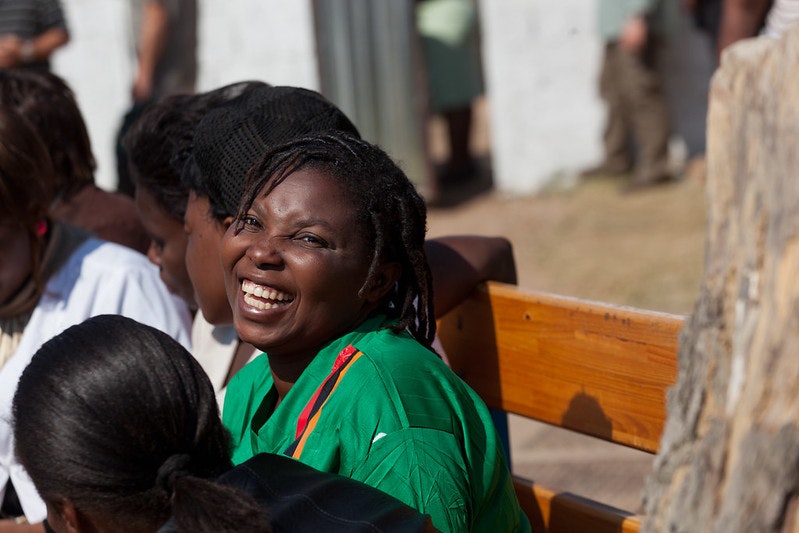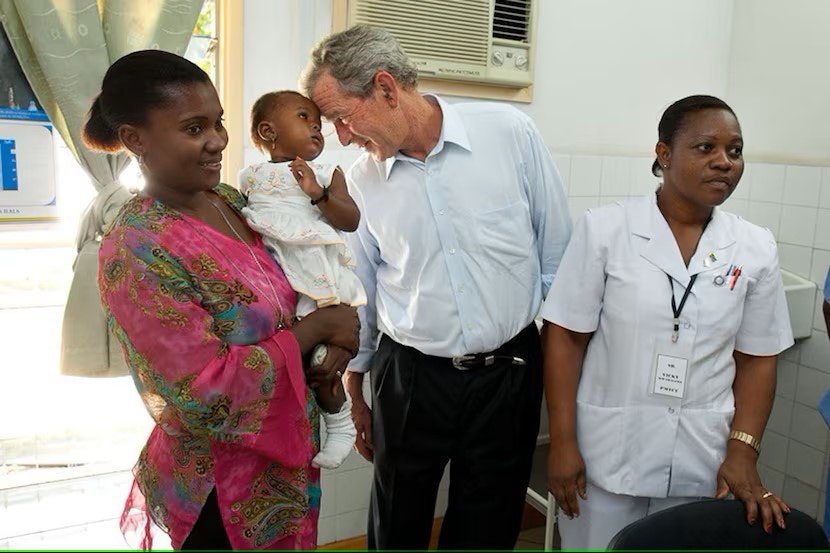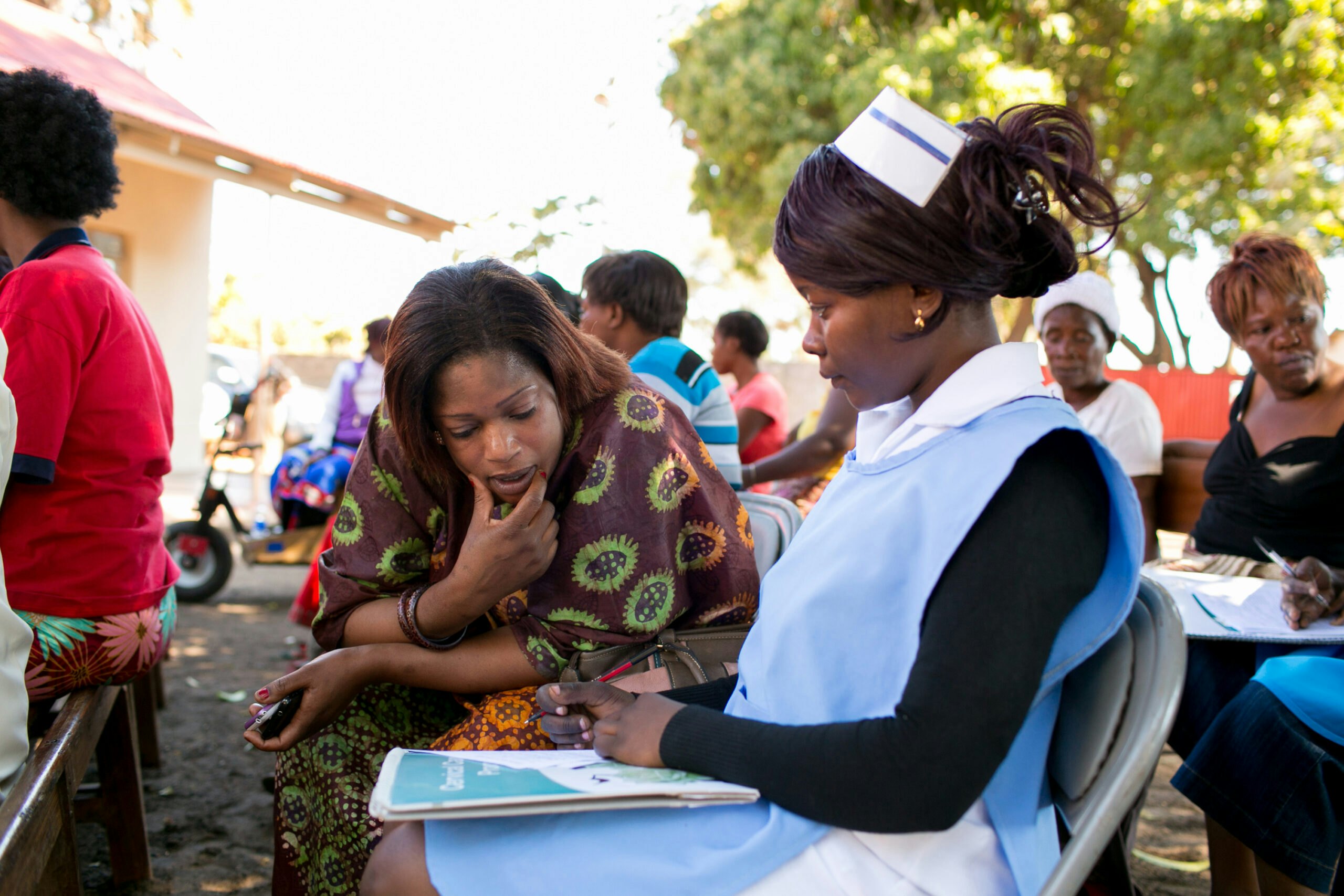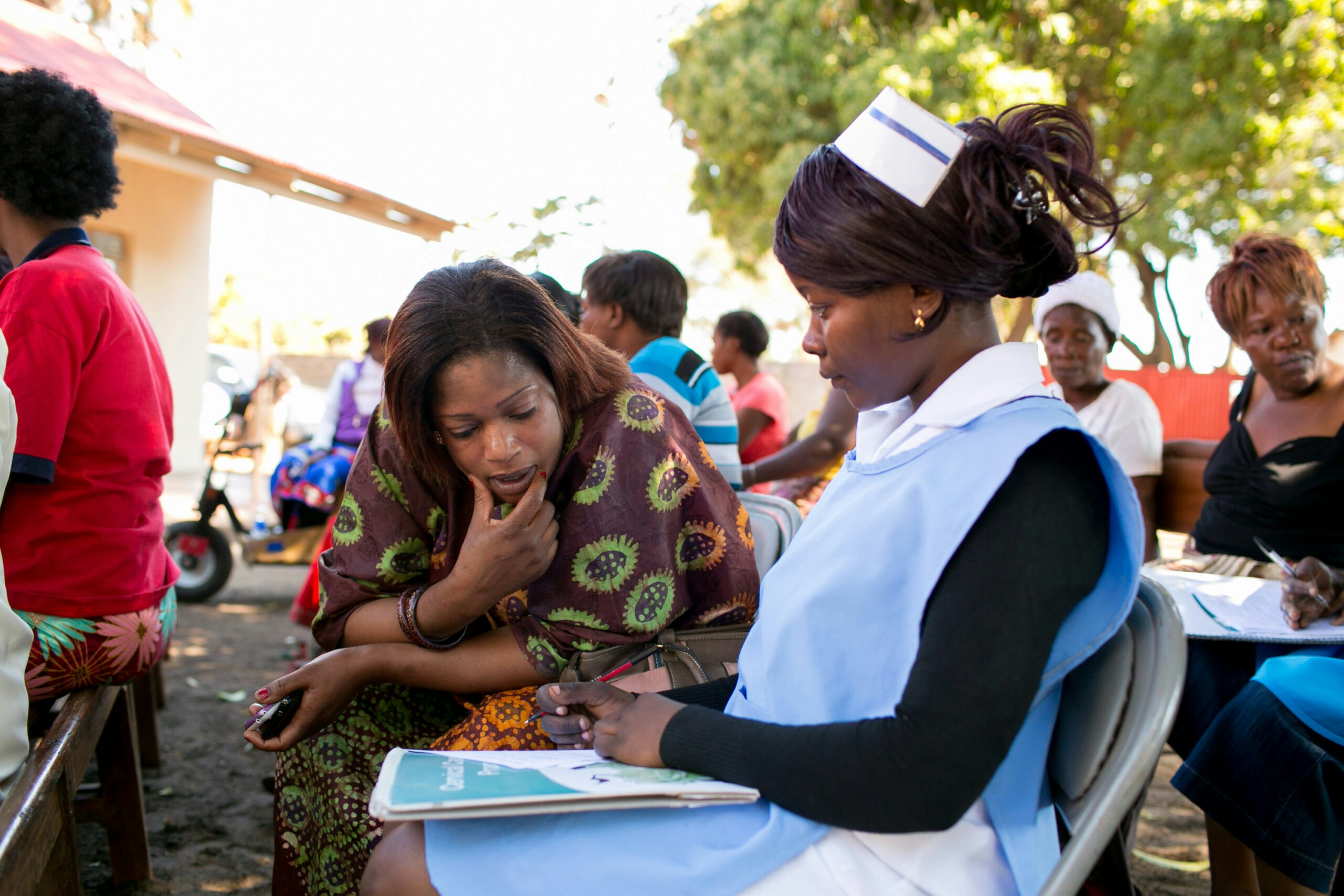During the five years since its launch, Pink Ribbon Red Ribbon has provided thousands of women in Africa with life-saving screenings and treatments -- and the impact can be felt worldwide.
Table of Contents
Bush Center Briefing
October 2016
Domestic Excellence
Preparing 21st Century Workers
The Economy is Going to Keep Changing, So We Need to Adjust Our Skills
School Achievement Can Drive Economic Growth
Helping Workers in Cities Make Transitions
The Military as a Training Ground for the Future Economy
Global Impact
The intense debate over globalization usually focuses on economic issues, yet there are many ways that the United States and other nations can benefit from working across borders. Epidemics can easily cross borders and oceans. Strong health systems are needed to combat and diminish health threats that can impact all of us.
President George W. Bush began this important work in 2003 when he announced the President’s Emergency Plan for AIDS Relief (PEPFAR). Building upon that initiative, the George W. Bush Institute, PEPFAR, Susan G. Komen®, and the Joint United Nations Programme on HIV/AIDS (UNAIDS) launched Pink Ribbon Red Ribbon (PRRR) in September 2011.
The coalition, which now numbers more than 30 partners, was conceived to save the lives of women in sub-Saharan Africa from cervical cancer and breast cancer. This fall is PRRR’s fifth anniversary, so it is an appropriate time to remember why the U.S. and partners around the world should work together to combat disease.
Cervical cancer is a preventable and treatable disease, but it has a devastating impact on women in low- and middle-income countries. HIV positive women are five times more likely to develop cervical cancer. We have effective, affordable tools to both prevent and treat the disease.
Cervical cancer is a preventable and treatable disease, but it has a devastating impact on women in low- and middle-income countries. HIV positive women are five times more likely to develop cervical cancer.
In 2015 alone, there were nearly half a million cases and 266,000 deaths from cervical cancer globally. Nearly 90% of those deaths occurred in countries with insufficient resources.
The threat from cervical cancer is largely concentrated in sub-Saharan Africa, where it is the leading cancer and most common cause of death from cancer among women. The threat is compounded by lack of access to screening and treatment programs, and limited availability of vaccines that prevent HPV, the virus that causes most cervical cancer cases.
This explains why PEPFAR, the President’s Emergency Plan for AIDS Relief, is involved in the global fight against cervical cancer. Now in its second decade, the bipartisan initiative has resulted in millions of lives saved. But the United States needs to ensure that women who survive HIV do not succumb to cervical cancer.
Fortunately, PEPFAR, the U.S. National Cancer Institute, and the Centers for Disease Control, in addition to many private sector partners, have stepped forward. They support PRRR and its country partners with cancer-control planning, cancer registries, research, and funding for cancer screening, treatment, and prevention programs. Over the last five years, Pink Ribbon Red Ribbon programs in Botswana, Tanzania, Ethiopia, and Zambia have seen these results:
- 119,192 girls have received all doses of the HPV vaccine;
- 316,652 women have received a basic screening for cervical cancer;
- 22,039 women have been treated with cryotherapy or LEEP for cervical cancer; and
- 15,141 women have been screened for breast cancer.
The second reason the U.S. should be engaged on the global health front is that diseases like cervical cancer and AIDS can destabilize developing nations. Endemic disease threatens the development of nations across Africa, harming economic productivity and increasing instability.
The impact is felt in numerous ways, each of which deprives a nation and communities of leadership and talent. Diseases that work their way across a nation make it harder to provide a healthy workforce that grows an economy. When women die of cervical cancer in their 30s and 40s, their children may need to leave school, and the socio-economic status of the family plummets. The death of young women destabilizes communities and families.
Diseases that work their way across a nation make it harder to provide a healthy workforce that grows an economy. When women die of cervical cancer in their 30’s and 40’s, their children may need to leave school, and the socio-economic status of the family plummets.
We in the United States may not always realize this, but instability in developing nations matters here, too. Instability and poverty can trigger mass migrations and civil unrest that requires international engagement.
What’s more, diseases can easily cross borders in our modern, connected world. Americans saw this as the Ebola virus entered the United States a few years ago. Controlling such threats in their country of origin limits their ability to spread and do harm elsewhere. Strong health systems ensure a healthy, productive population, and allow for epidemic monitoring and control. It protects the safety of all countries.
Pink Ribbon Red Ribbon is one example of this work. We are driven by the strong belief that through greater access to cancer prevention and treatment, healthy women strengthen families, communities and nations, and drive global economic growth and prosperity.
Celina Schocken is chief executive officer of Pink Ribbon Red Ribbon.




























